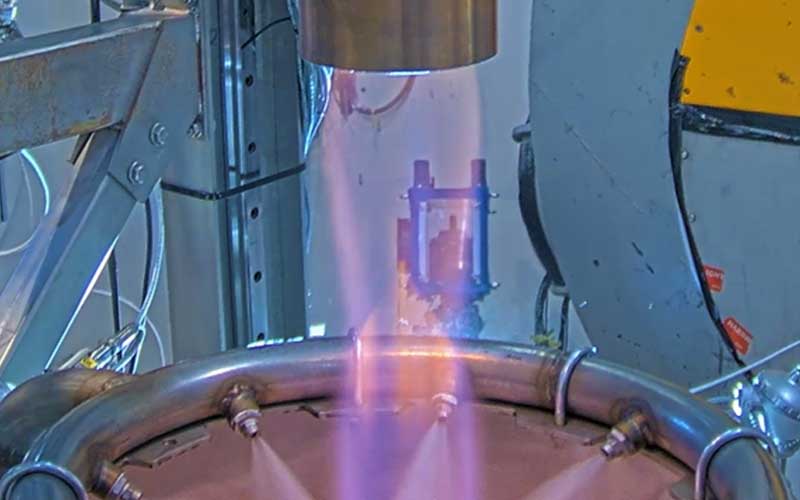
A Polish consortium has completed a Phase A static fire test campaign of a new variable-thrust rocket engine.
The Throttleable Liquid Propulsion Demonstrator (TLPD) engine project is part of ESA’s Future Launchers Preparatory Programme. The Polish consortium developing the engine is led by the Łukasiewicz Research Network’s Institute of Aviation (Lukasiewicz-ILOT), which is also responsible for developing the ILR-33 AMBER 2K rocket that made history last month.
With a design that enables it to be throttled down to 20% and up to 110% of its optimal level of thrust, the TLPD engine could be utilized for a range of applications, including as a landing engine for reusable rockets or spacecraft landing on the surface of the Moon and other planetary bodies. However, the primary goal of the TLPD project is to test propellant valves and injectors that can vary the thrust of rocket engines powered by storable propellants.
The TLPD engine is capable of producing 5kN of thrust and is powered by hydrogen peroxide and ethanol, storable propellants that do not need to be actively cooled and are ignited upon contact with each other. The resulting propulsion system is simple and reliable.
The static fire test campaign
During the Phase A test campaign, the engine was fired 17 times for up to 10 seconds at a time. This first phase of testing saw the engine maintained at a constant thrust. A subsequent test campaign was expected to begin investigating the engine’s variable thrust capability. However, after promising initial results from the first test campaign, the team moved straight to a pair of 15-second hot fire tests that saw the thrust produced varied down to 20% and up to 80% of its optimal level.
The TLPD is now being dismounted and analyzed by teams from Lukasiewicz-ILOT and its partners Astronika and Jakusz SpaceTech. The next phase of testing, expected to begin in October, will fully explore the engine’s variable thrust capability.




